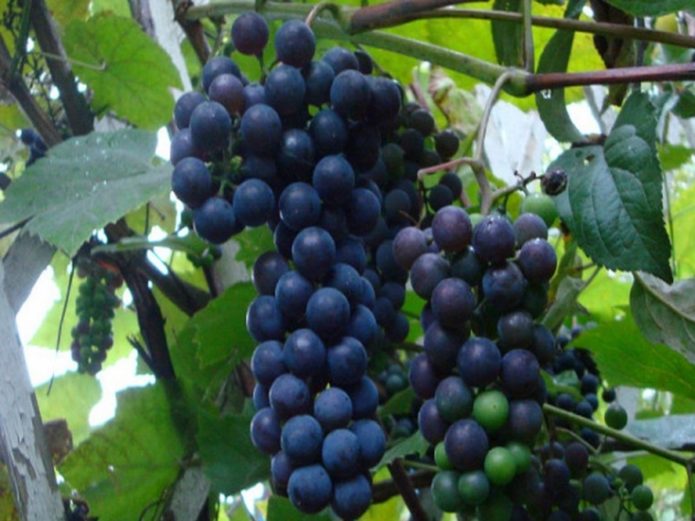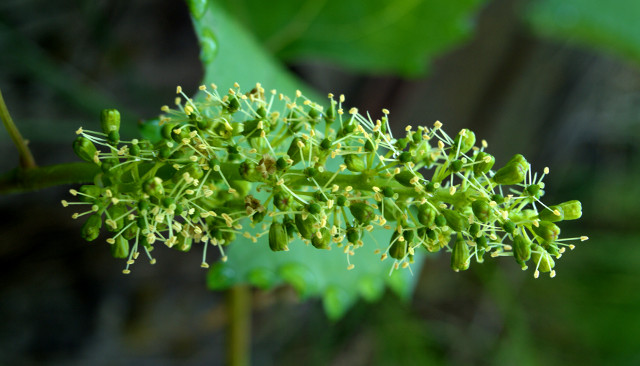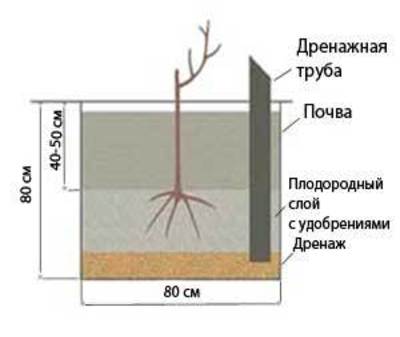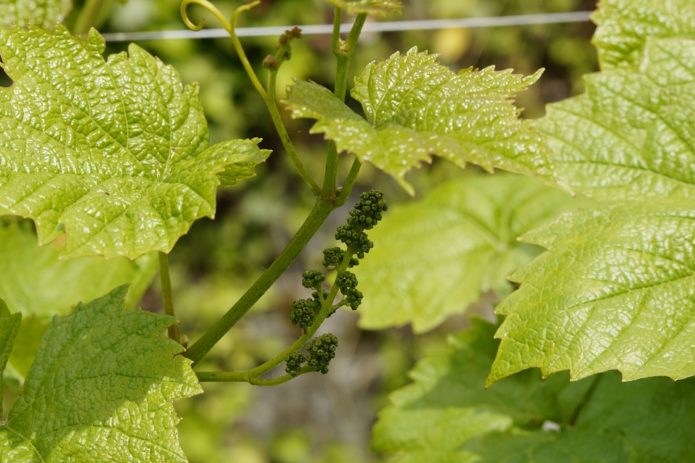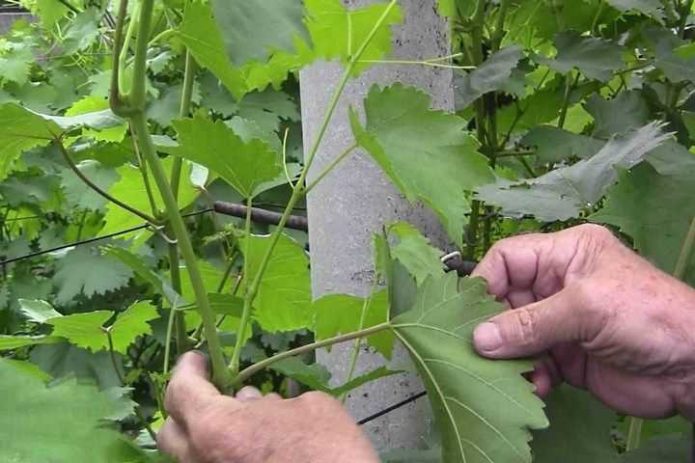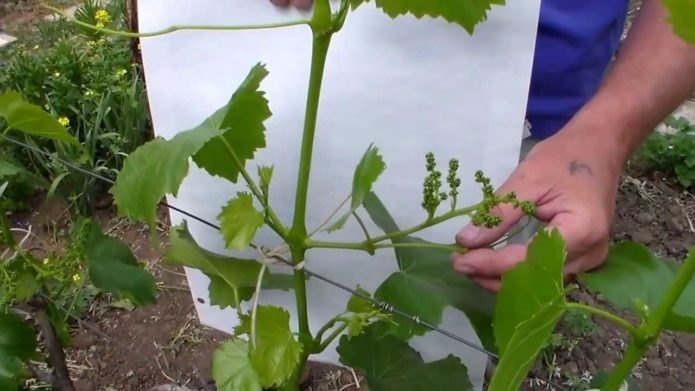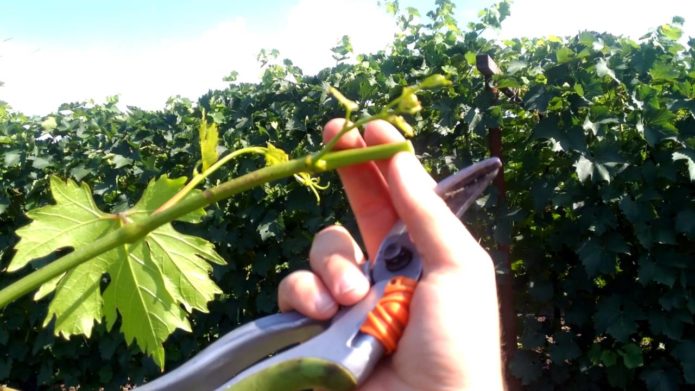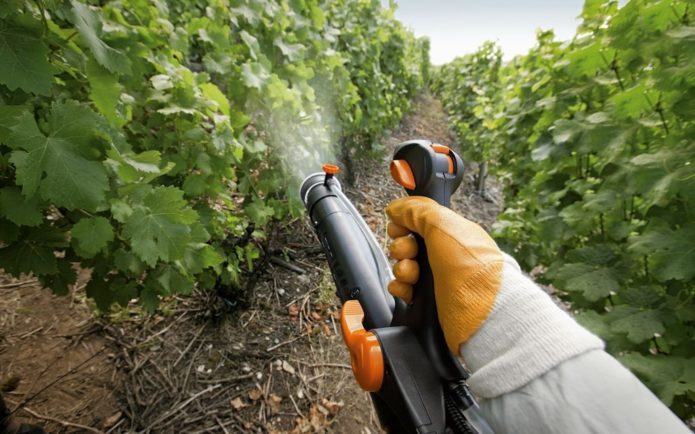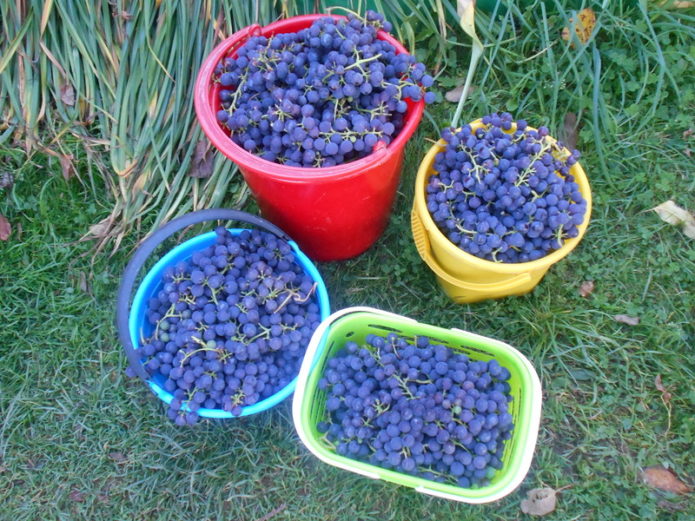Alpha grapes are mistakenly called Isabella in some regions for their striking resemblance to this legendary variety. One of the most significant differences: Isabella grapes - this is a southern variety, while Alpha ripens in the conditions of the Leningrad region, the Far East, the Urals, Siberia, although it is not an early variety. Even a beginner can grow such grapes, but Alpha also has features that will have to be reckoned with.
Content
The history of the Alpha grape and its main characteristics
Alpha is known to winegrowers in both the north and south as an extremely hardy variety. It was bred in the American state of Minnesota as a result of crossing wild forms. It was brought back to Soviet Russia, studied by biologists in Odessa. In 1937, Alpha was transported to the Primorsky Territory. In this region, it is still the main technical grade. In 1962 it was zoned for the southern regions of the Belarusian Republic.
Today the variety is popular in northern Ukraine, and in Russia - in the Far East; it grows freely in southern Siberia and the Moscow region. In areas where the temperature does not drop below -30 ... -35 ⁰C in winter, Alfa is grown in a non-sheltered form, used for landscaping arbors and fences. This hybrid form often serves as a rootstock.
Video: Alpha grapes on the gazebo
The bush has great vigor, gives many shoots and stepchildren. If your goal is not a green hedge, but a harvest, then you will often have to arm yourself with a pruner. Alpha's leaves are three-lobed, glossy, slightly wrinkled above, light green below, with pubescence. The flower is bisexual, so the grapes are self-pollinating.
From blooming buds to ripening berries take 135-145 days. Bunches are small, conical or cylindrical, each weighing about 120 g, rarely - 200 g. In a large formation, for example, on a gazebo, they are reduced to 70 g, however, the yield increases. So, from a young bush, you can collect 18 kg, and from a 20-year-old, well-grown - up to 100 kg.
The berries are small (1.5 cm in diameter), black, sometimes with a burgundy side, covered with a thick waxy coating. The consistency of the fruits of Alpha is similar to Isabella: the skin is easily separated, the pulp is slimy, dense, the bones are well felt. Taste from tart to sweet, with a faint strawberry aroma, professional tasters call it mediocre. They are more technical grapes than table grapes.
The variety does not suffer from mildew, it is resistant to powdery mildew. The berries do not crack even after several rainy days, but without watering they dry up and crumble. It is recommended to harvest the crop after the first freeze, when the leaves dry out. Then the bunches are better visible, and the acid content in the fruits decreases.
When buying a grafted seedling, you need to carefully examine it: there should be a noticeable tubercle at the junction of the scion and rootstock, if it is not there, the seedling is rooted, you should not overpay for it:https://flowers.bigbadmole.com/en/yagody/vinograd/kak-posadit-vinograd-vesnoy-sazhentsami.html
Video: Alpha grapes in autumn, after frost
Planting grapes Alpha
A place for a mid-season variety in regions with short summers, choose a sunny: the south side of the fence or at home. Alpha grows well in the shade, but maturation with a lack of solar energy is stretched. Planting grape seedlings - 1.5x2 m. The size of the planting pit depends on the quality of the soil. On poor clay and sandy, its dimensions are 80x80 cm, on chernozem - 50x50 cm. The drainage layer is laid only on clay, poorly absorbing water, soil.
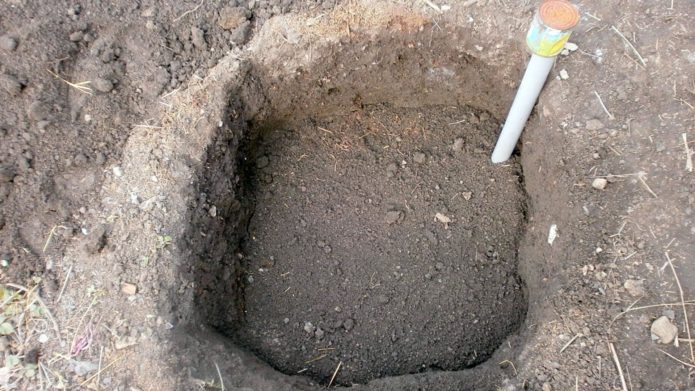
The size of the planting pit, the amount of fertilizers placed in it, the need for a drainage system - depend on the type of soil on your site
Fill the pit by a third with humus, mix it with 0.5 kg of wood ash. On top of this nutrient pad, add a layer (5 cm) of regular soil from the plot. Place the seedling in the center and cover its roots with soil removed from the top layer (30 cm) when digging a hole. To grow Alpha in a covering form, deepen the stem to the point of origin of the lower lateral shoot.
How to water
The Alpha variety is not drought tolerant, it needs watering. But if you live in a super humid climate of Primorye or a rainy summer, then this agricultural practice can be ignored. There are two main ways to irrigate a vineyard:
- through the drip irrigation system;
- from a bucket or hose into trenches dug along or around the bushes.
Water 1-2 times a month, but abundantly, so as to wet the soil layer to the depth of the main mass of roots (80-100 cm). Keep the soil under mulch with a thickness of 6–8 cm. Only under this condition will the soil remain moist and loose and not form cracks.
How to feed
Alpha begins to bear fruit in the third year after planting, from that time it is necessary to make additional fertilizing annually. Their composition also depends on the structure of the soil:
- On chernozems, this variety fattens: it forms many shoots to the detriment of the harvest. This means that nitrogen fertilizers, which are responsible for the growth of the green mass, must be applied to a minimum, give up infusions of droppings, mullein, urea solutions and ammonium nitrate. Focus on special complex mixtures for grapes containing potassium, phosphorus and microelements (Chistaya leaf, Florovit, Novofert, etc.). You can replace them with wood ash (0.5 l for a bush). During the season, it is enough to make 2 dressings: at the beginning of the growing season and before flowering. Apply organic matter (manure, humus, compost) once every 3-4 years, in spring or late autumn (2 buckets under a bush).
- Loamy and sandy loam soils are the golden mean in terms of fertility. Top dressing will require 3-4:
- in early spring or late autumn - 1-2 buckets of humus under a bush;
- before flowering - complex fertilizer with microelements or ash, such feeding can be repeated when ovaries are formed;
- in the fall, after harvesting - 1.5 tbsp. l. under the bush of superphosphate and any potassium salt without chlorine.
- Poor clay and sandy soils will have to be fertilized more often:
- immediately after the leaves bloom, give nitrogen feeding with mullein infusion (1:10), bird droppings (1:20) or carbamide solution (1 tablespoon per 10 liters of water);
- after 10-14 days, repeat the nitrogen fertilization;
- before flowering and at the beginning of ovary growth, use a complex mixture with trace elements;
- in the fall, apply phosphorus-potassium fertilizers and mulch with humus.
Formation and thinning of bushes
A lot of time when growing Alpha is spent on forming bushes and removing stepchildren. In regions of risky farming, bushes are formed in two arms, vines are cut into 8-10 buds, fruit-bearing shoots are tied vertically to trellises. For the south, the arbor shape is characteristic, when the grapes twist freely along the supports, and the shoots with bunches hang down. In this case, pruning consists in removing dry wood.
Pruning grapes in the fall. Instructions with diagrams and pictures for beginners:https://flowers.bigbadmole.com/en/uhod-za-rasteniyami/obrezka-vinograda-osenyu.html
Video: How Alpha Pruning Affects Ripening Timing
The main pruning is done in autumn or early spring, however, and in summer, when grown on a trellis, this variety will not let you sit idle:
- When buds begin to appear, remove all shoots on which they are not laid, of course, the exception is replacement knots. Leave 1-2 bunches for each fruitful shoot.
- Break out or pinch all stepsons over the second sheet. During the summer, Alpha will have to stepchild 3-4 times.
- Also remove the buds and clusters formed on the stepsons. They will not have time to ripen.
- On a fruitful shoot, count 10-12 leaves from the bunch and pinch the top.
Disease prevention and shelter for the winter
Alpha has good immunity to disease. However, if you treat other varieties and crops with fungicides, then do not bypass these grapes. Fungi may not harm the vines and leaves, but they are on them and, under favorable conditions, will settle in neighboring, less resistant plants. For prevention, vineyards are usually sprayed twice: after the leaves bloom and again after 10-14 days. Use drugs: Ridomil, Skor, HOM, Bordeaux mixture, etc.
The first spring treatment of grapes from diseases: https://flowers.bigbadmole.com/en/yagody/vinograd/chem-obrabotat-vinograd-vesnoy-posle-otkryitiya.html
Video: an unsuccessful attempt to grow Alpha in an uncovered form (Yekaterinburg)
Meanwhile, in order to save Alpha from freezing, it is enough to remove her shoots from the supports and lay them on the ground. Under a layer of snow with a thickness of 30 cm or more, they winter well without any additional shelter. In regions with little snow, but harsh winters, grapes laid on the ground should be covered with straw, spruce branches, burlap, agrofibre, and on top with waterproof material.
Harvesting and using the crop
Alpha berries ripen in September. If they are still sour, they can be left until frost. But with the collection of fully ripe, sweet fruits, it is better not to hesitate. Otherwise, wasps will settle on your crop. These grapes can be eaten fresh, but not everyone likes the taste. Most of the harvest goes to making compotes, juices and wine. The sugar content of the variety is 15–18%, the acidity is 10–13 g / l.
Advantages and disadvantages of the variety - table
| Benefits | disadvantages |
| Matures in almost all regions of the Russian Federation | The bunches and berries in them are small |
| Berries have an isable taste and aroma, which is appreciated in winemaking | Taste inferior to almost all table varieties |
| Gives rich harvests | Without careful thinning, the bushes are heavily overgrown with unnecessary shoots, the yield falls |
| Due to its great strength of growth, it is used for landscaping | Poor drought tolerance |
| Serves as a good stock for other varieties | Ripens only towards the end of the season |
| Does not require the presence of another variety nearby for pollination | |
| Possesses high winter hardiness | |
| Is not affected by diseases even in high humidity conditions |
Winegrowers reviews
It grows in the village for about 15 years, wine and compotes from it are excellent. This year I planted a seedling of this variety in the yard. Criticism of it is not deserved, this is a technical variety, it will not be suitable for eating. Bunches and berries do not shine in size, but frost-resistant, resistant to diseases, quite fruitful, the wine made from it is tasty. Having paid attention to it only once when planting, you can do nothing more, but only come in the fall and collect the harvest, but if you pay more attention, then he will thank you with high-quality and good harvest. A variety for summer residents.
It grows overgrown with stepsons and powerful shoots so that nothing can be done, it will not work if planted next to other bushes. Yes, and a pure techie, the taste is such that no thief will covet him.
The confusion with the name "Isabella" in the Moscow region is due to the fact that there are varieties in taste, the color of the berries are very similar to Isabella. In the Moscow region, this is Alpha. Isabella can and can grow in the Moscow region, but no ripening. And Alpha is really open, frost-resistant - for gazebos - that's it.
My spring and summer turned out to be difficult (not only and not so much in terms of the weather), so everything on the site, as never before, is neglected. Due to the drought, Alpha's berries are small, too, as never before, although he watered her a little. The neighbors are even smaller, because they began to water only after I suggested that these frequent rains do not wet the earth, but only the grass, which only spreads rot. The beginning of the formation and growth of their berries took place in conditions of a lack of moisture, and subsequent watering could no longer change the situation.
Alpha grapes, of course, will not please the southerners. On their sites, varieties with large and juicy berries grow well. But for residents of regions with cool summers and frosty winters, this hybrid form is a real opportunity to grow and taste your grapes. The variety requires no more attention to itself than any garden crop, but the diet noticeably replenishes with new tastes.
